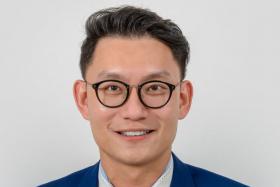National Cancer Centre Singapore to raise $70m
National Cancer Centre Singapore begins public phase of campaign to raise $150m in total by 2022
Over the past four years, the National Cancer Centre Singapore (NCCS) has quietly raised $80 million in a behind-the-scenes donation drive.
Yesterday, it officially embarked on the public phase of its campaign to raise a further $70 million, in order to hit its target of $150 million in total by 2022.
The money will go towards caring for cancer patients, as well as research and education on the disease, which is the top cause of death here. At least one in four Singaporeans will be diagnosed with cancer at some point in their lives.
Associate Professor William Hwang, medical director of NCCS, said cancer is becoming more common because of unhealthy modern lifestyles and people living to an older age.
"As we grow older, there tends to be more genetic mutations happening," he said.
"But why should we allow cancer to interfere in our ageing process?... We need urgently to find better ways to prevent, detect and treat cancer."
The largest donation to date has been $50 million from the Goh Foundation, the majority of which will go towards the proton therapy facility that NCCS is constructing in its new premises.
Proton therapy is a cutting-edge cancer treatment technology that is able to kill cancer cells with less collateral damage than conventional treatments.
The new building is expected to be ready by 2022 and will be four times larger than its current premises.
The fund-raising campaign is anchored on cancer survivors. NCCS hopes to help more people survive the disease by investing in cancer care and research.
One such survivor is sales administrator Hashimah Bachok, who was diagnosed with breast cancer in 2014 and underwent surgery, chemotherapy and radiotherapy.
She estimates that the cost of her treatment before subsidies would have amounted to between $60,000 and $100,000.
"For those who are not so well-off, I'm sure they would think twice about going for treatment," Madam Hashimah said.
The 49-year-old encouraged all those facing a similar battle to press on and learn as much as possible about the disease.
"It's not easy but ultimately you shouldn't give up, and you should learn more about your illness," she said.
"Then you know what you are expecting."
Get The New Paper on your phone with the free TNP app. Download from the Apple App Store or Google Play Store now



